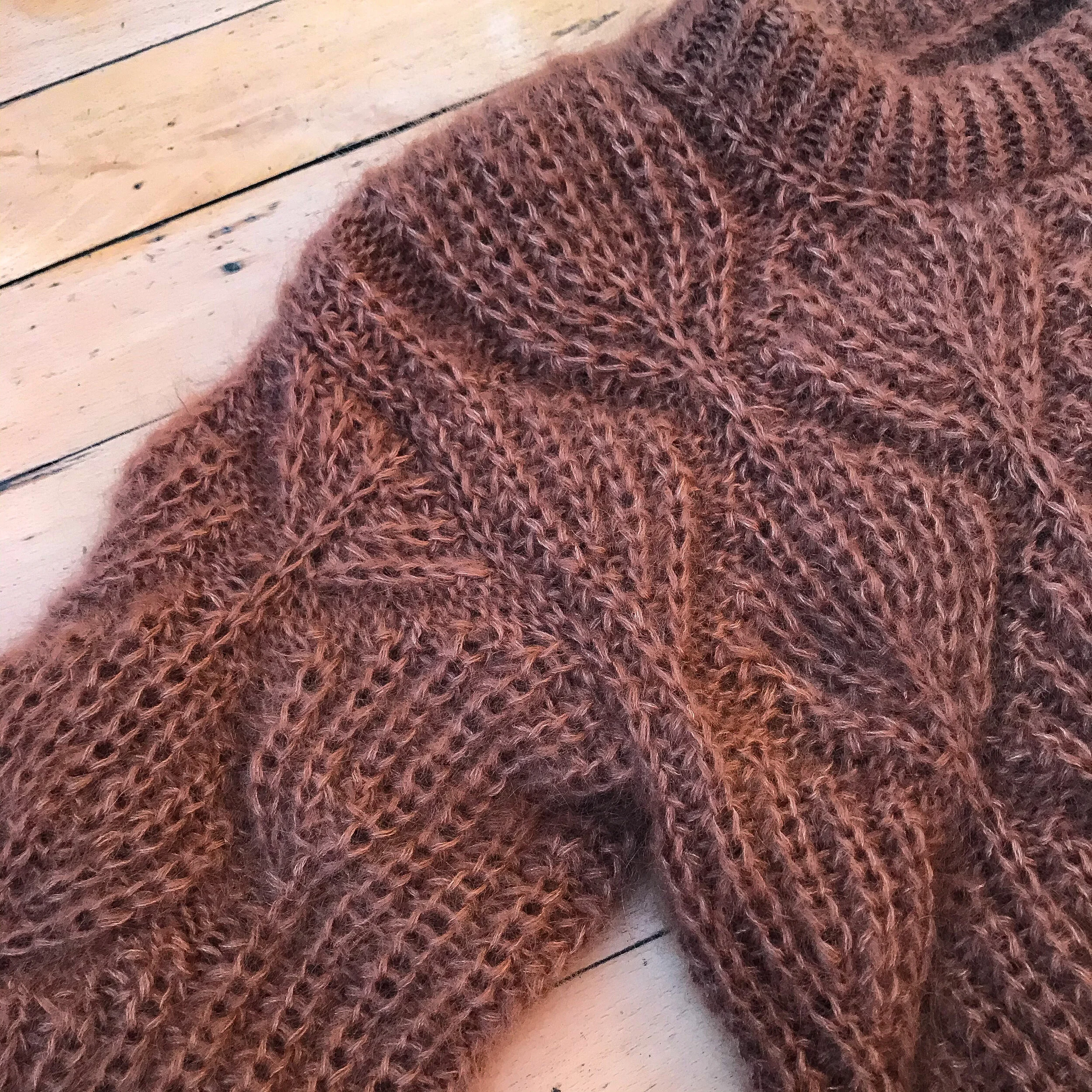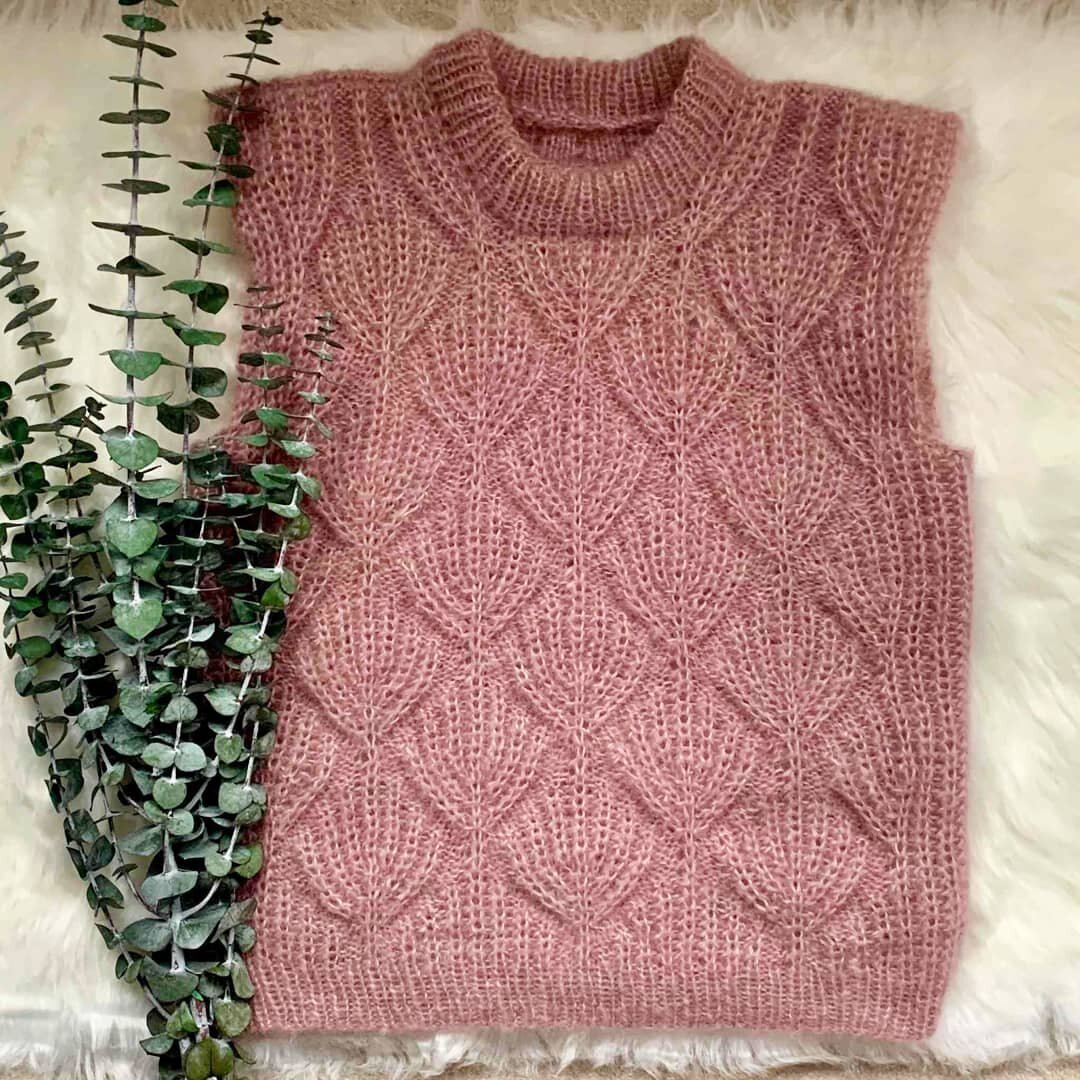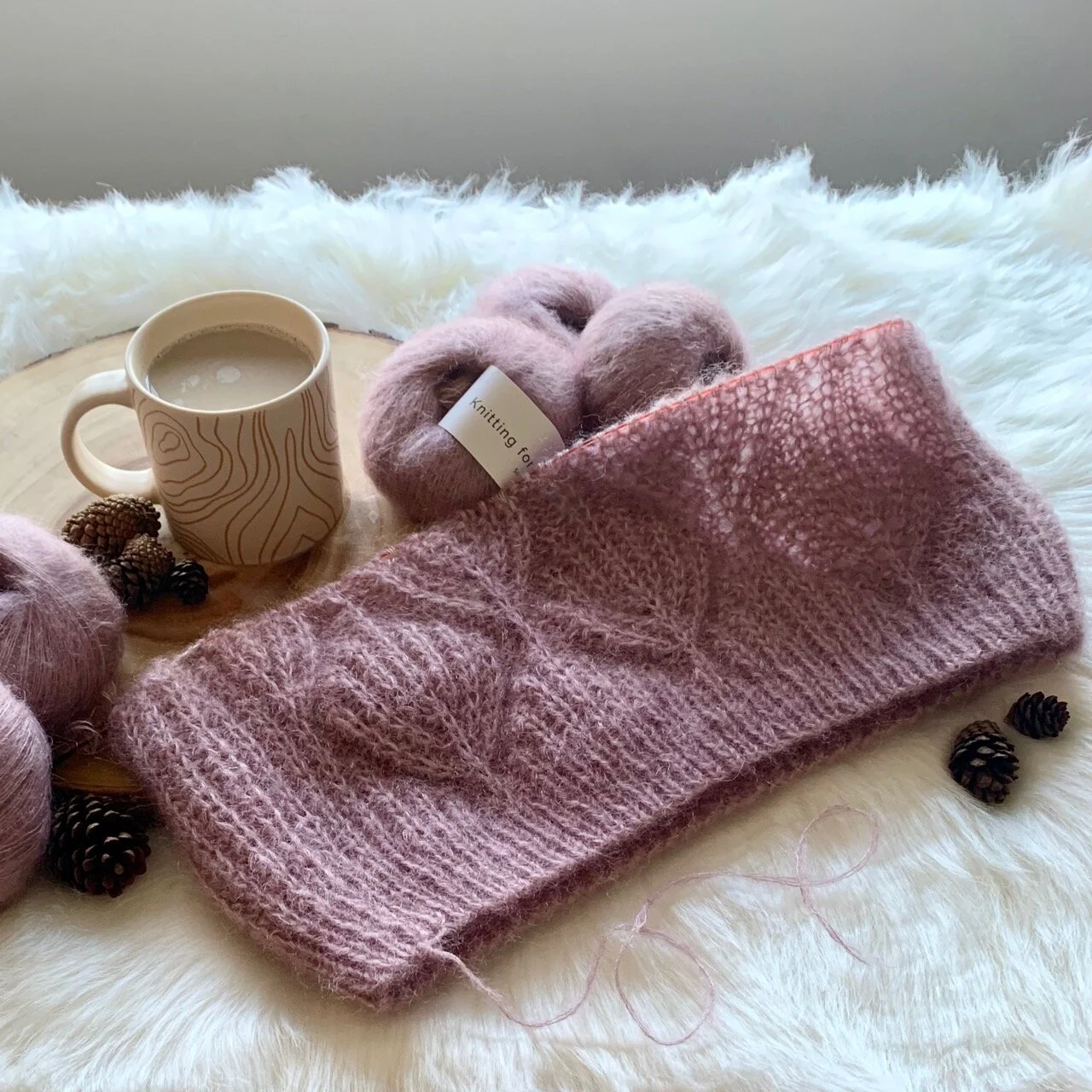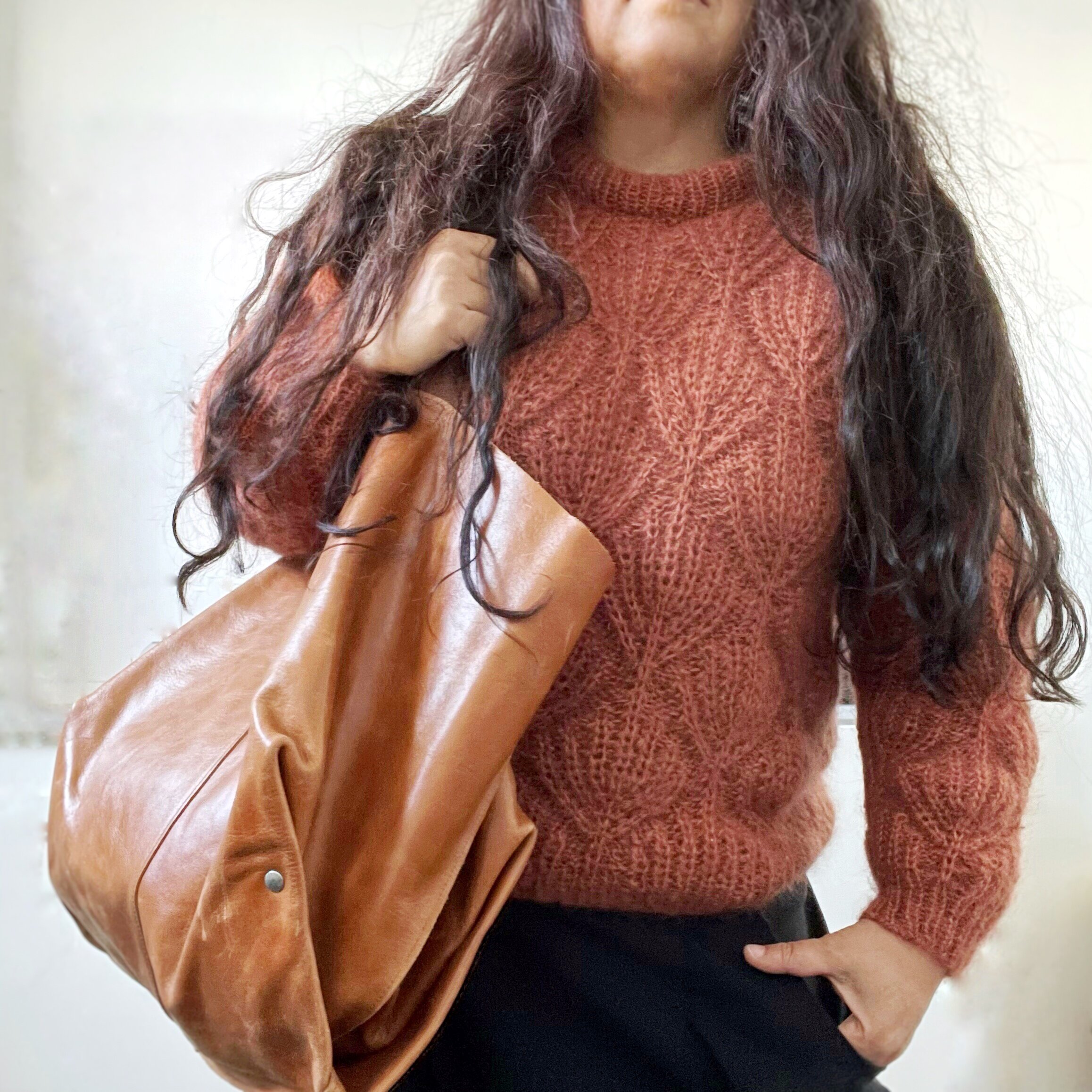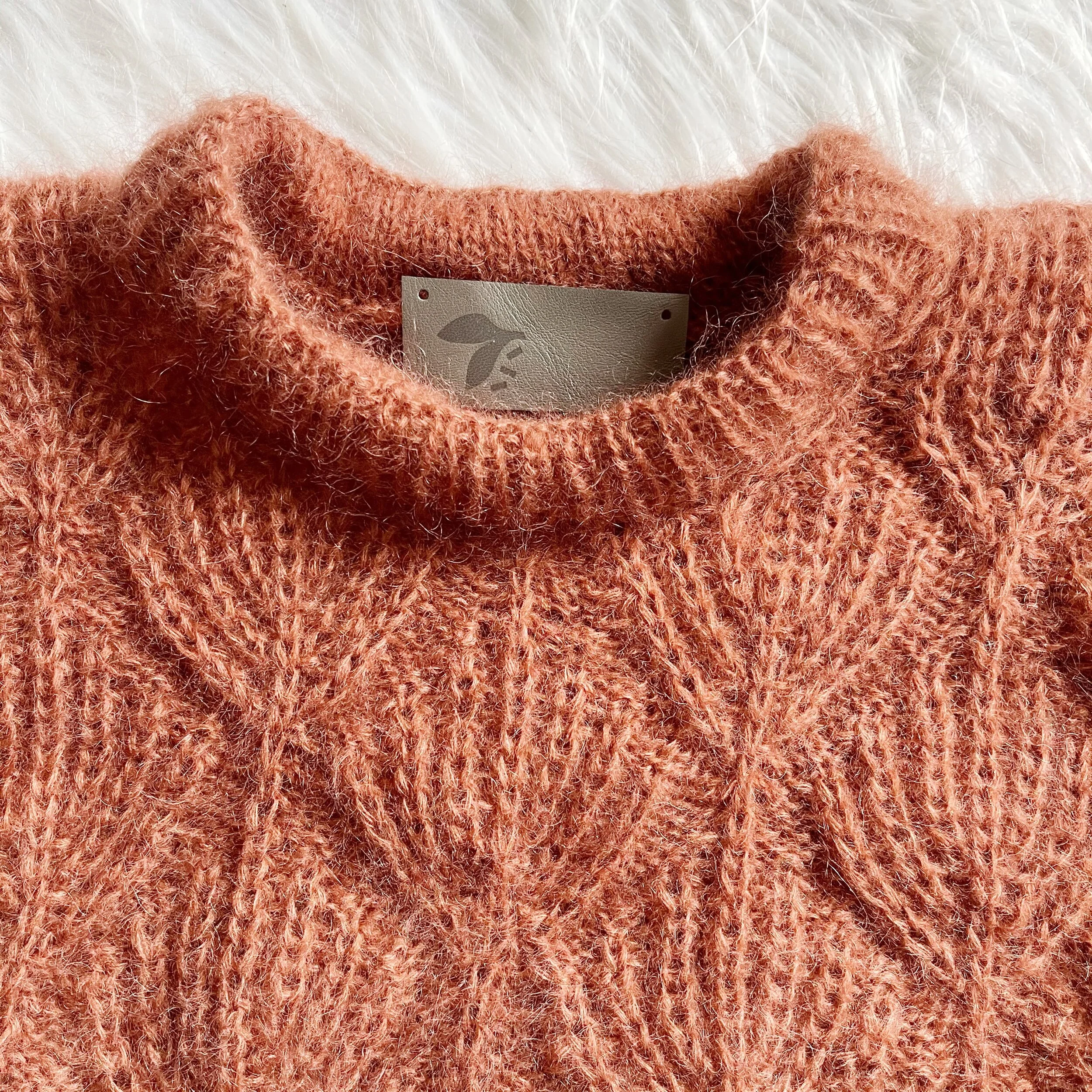Seashell sweater
Seashell sweater
Français & English
Téléchargement version PDF - Download PDF version
Niveau Avancé - Advanced Level
Le patron contient un rappel des techniques abordées et des liens interactifs vers les tutoriels sur le site Trust the Mojo.
The pattern includes reminders of the techniques and interactive links to tutorials on the website Trust the Mojo.
1. In green - size XS - Kid Silk Mohair in Sage (34) from Drops Design
2. In light yellow - Size M - Kid Silk Mohair in Vanilla (29) from Drops Design
3. Size XS knitted by Yolande @inthestreetbelow - Diablo in Titanium (03) from Hobbii
4. Size XS knitted by Lucy @spoonfuloftalent - Kid Silk Mohair from Drops Design and Mohair from Isager Yarn
5. Size S knitted by Tam @oliviaandoliverfibers - Kid Silk Mohair in Curry (33) from Drops Design
6. Size S knitted by Florence @edel_flo - Soft Silk Mohair in Forest Berry from Knitting for Olive
7. Size S knitted by Barbara @barbaracraftandfabrics - Silk Mohair concept (223) from Katia
8. Size S knitted by Virginie @un_amour_de_laine - Soft Silk Mohair in Nougat from Knitting for Olive
9. Size M knitted by Audrey @aude_knits - Soft Silk Mohair in Dusty Pink from Knitting for Olive
10. Size M knitted by Louise and Lenny @knitterssisters - Diablo in Henna (41) from Hobbii and Angel from Bergère de France
11. Size M knitted by Tania @tania.ho - Soft Silk Mohair in Dark Moose from Knitting for Olive
12. Size L knitted by Sarah @ariamoon - Kid Silk Mohair in Rust (33) from Drops Design
Langues français & anglais
Niveau Avancé
Le pull Seashell est d’un niveau avancé. La construction ne présente pas de difficultés particulières si vous êtes familiers avec les techniques de base du tricot circulaire, mais le point de coquillage n’est pas le plus simple à tricoter, il demande de la concentration et fait appel à des techniques un peu complexes (mailles doubles, augmentations et diminutions) d’autant plus si vous tricotez en triple fil Mohair.
Le patron contient cependant des explications écrites détaillées, des grilles, des supports vidéo pour les techniques un peu particulières, et une check-list pour vous aider à suivre votre progression : il reste donc accessible aux tricoteurs intermédiaires. C’est un bon patron pour passer du niveau intermédiaire au niveau avancé si vous êtes motivés et que vous aimez les défis !
Construction
Le pull Seashell se tricote de bas en haut en trois parties : le corps et les manches. Le corps se tricote en tricot circulaire jusqu’à atteindre le dessous des emmanchures, puis on tricote séparément le dos et le devant en tricot plat. On rabat ensuite les mailles des épaules du dos et du devant ensemble pour éviter d’avoir à réaliser une couture, puis on relève les mailles de long de l’encolure pour tricoter le col en tricot circulaire. Les manches se tricotent de bas en haut en tricot circulaire avec la technique du Magic Loop. Au dernier rang, on ne rabat pas les mailles des manches : on les assemble directement au corps pour obtenir une couture souple au niveau des emmanchures.
Techniques
alternate cable cast on - mailles endroit et envers - mailles doubles - augmentations intercalaires - tricoter 2 mailles ensemble à l’envers - Magic Loop - rabattre les mailles - relever les mailles - coudre la doublure d’un col et les manches sur des rangs de mailles ouvertes
Le patron inclus un rappel des techniques en fin de patron, sur www.trustthemojo.com et sur Youtube
Coupe et tailles
Ce modèle est ajusté. Les tailles XS (S - M - L) correspondent à un tour de poitrine d’environ 80/85 (85/90 - 90/95 - 95/100) cm, avec une légère aisance. Je vous recommande de tricoter la taille que vous portez habituellement, mais si vous préférez un porté plus serré/plus ample, choisissez une taille en dessous/au-dessus. Pensez bien à prendre vos propres mesures afin de choisir la taille qui vous convient le mieux, selon votre morphologie et la coupe que vous souhaitez obtenir.
Matériel
• 250 g (275 g - 300 g - 325 g)* de fil Mohair et Soie - 25g/210 m - tricoté en triple fil *tailles XS (S - M - L)
• Des aiguilles circulaires 4,5 mm câble 80 ou 100 cm pour les bords côtes et le col
• Des aiguilles circulaires 5 mm câble 80 et/ou 100 cm
• Une 3e aiguille 5 mm (ou 5,5 ou 6 mm) pour rabattre les mailles des épaules
• Des câbles supplémentaires ou du fil pour placer les mailles en attente
• 3 anneaux marqueurs couleur A, 1 anneau marqueur couleur B
• 1 aiguille à laine, 1 paire de ciseaux, des épingles et un support pour le blocage
Choisir la laine
Le patron se tricote en triple fil (on tricote trois fils ensemble) avec du fil Mohair/Soie 25 g = 210 m. Voici quelques exemples de laines que j’ai testées et qui fonctionnent bien pour ce patron :
- Drops Kid Silk de Drops Design
- Phil Mohair Soie de Phildar
- Soft Silk Mohair de Knitting for Olive
Les métrages indiqués correspondent aux quantités totales nécessaires pour du triple fil, mais vous pouvez tout à fait tricoter en fil simple ou double. Dans ce cas, vous n’aurez pas besoin de la même longueur de fil. Si vous utilisez un fil simple, divisez le métrage total par trois. Si vous tricotez en fil double, divisez le métrage total par 3, puis multipliez le résultat par 2.
Métrage total fil simple = métrage total fil triple/3
Métrage total fil double = (métrage total fil triple/3)x2
Vous pouvez également choisir une autre matière que le Mohair mais faites tout de même attention, pour obtenir les mêmes mesures que celles indiquées dans le patron, le titrage des fils que vous utilisez doit être plus ou moins le même, et vous devez obtenir le même échantillon. Avant de choisir votre laine, faites un essai pour vérifier que la jauge correspond, et surtout que le motif ressort bien (avec certaines matières, on ne le distingue pas bien). Si vous n’êtes pas encore très à l’aise avec ce type de point à mailles doubles, il vaut mieux éviter les laines très foncées et privilégier les couleurs claires, le motif sera plus facile à distinguer.
L’échantillon
13 mailles x 26 rangs = 10 x 10 cm avec des aiguilles 5 mm, au point de côtes perlées.
Language french & english
Level Advanced
The Seashell sweater is an advanced level pattern. The construction is not particularly difficult if you are familiar with the basic circular knitting techniques, but the Seashell stitch is not the easiest to knit, it requires concentration and includes complex techniques (brioche stitch, increases and decreases), all the more if you use triple strands of Mohair.
However, the pattern includes detailed written instructions, charts, video tutorials for special techniques and a check-list to help you keep track of your progress, so it remains accessible to intermediate knitters. It’s a good pattern il you are looking to move up from an intermediate to an advanced level, if you are motivated and like challenges!
Construction
The Seashell sweater is worked from bottom to top in three parts: the body, and the sleeves. The bottom of body is worked in circular knitting. Once you reach the armholes, you will work separately the top of the back and the front in flat knitting. To avoid having to do a seaming, you will cast off the stitches of the front and back shoulders together. Then, you will pick up the stitches of the neckline to knit the collar. The sleeves are worked entirely in circular knitting with the Magic Loop technique. After the last row, you will make a seam to assemble the sleeves to the body, without casting off the stitches. This way, the armholes will be nice and elastic.
Techniques
alternate cable cast on - knit stitch - purl stitch - brioche stitch - increases - decreases - Magic Loop - cast off - picking up stitches - seaming the collar and the sleeves on an open row of stitches
The pattern includes reminders of the techniques at the end of the pattern, and interactive links to tutorials on www.trustthemojo.com and on Youtube
Shape and sizes
This sweater has a rather tight fit. Sizes XS (S - M - L) are suited for a 80/85 (85/90 - 90/95 - 95/100) cm [33.5/35.5 (35.5/37.5 - 37.5/39 - 39/43) inches] bust size, with a slight ease. Make sure to take you measurements in order to choose the size that will fit you best, depending on your morphology and the shaping you prefer. I recommend choosing your usual size, but if you prefer a tighter/looser fit, you can choose one size under/up.
Supplies
• 250 g (275 g - 300 g - 325 g)* of Silk Mohair - 25g/210 m (230 yds) - for triple strand knitting *sizes XS (S - M - L)
• 4,5 mm/7 US/7 UK circular needles, cable 80 or 100 cm for the rib edges and the collar
• 5 mm/8 US/6 UK circular needles, cable 80 and/or 100 cm
• A third needle, 5 mm (or 5,5 or 6 mm) to cast off the stitches of the shoulders
• Extra cables or some waste yarn to put the stitches on hold
• 3 markers color A, 1 marker color B
• a sewing needle, scissors, pins and a flat surface to block you knitting
Choosing you yarn
The pattern is knitted using three strands of Silk/Mohair 25 g = 210 m (229 yds). Here are some yarns that I have tested and which work well for this pattern:
- Drops Kid Silk from Drops Design
- Phil Mohair Soie from Phildar
- Soft Silk Mohair from Knitting for Olive
The yardage indicated is the total necessary to work with three strands, however you may want to use a different kind of yarn, or work with only one or two strands. In that case, you won’t be needing the same yardage. If you use one strand, divide the total amount by three. For two strands, divide the yardage by three, and multiply the result by two. If you choose another type of yarn, make sure that the gauge is the same and that you obtain the same sample. Otherwise you might not end up with the same measurements. You might also want to check that you get a nice texture (with some yarns, the pattern doesn’t always stand out so well). If you are not very familiar with this type of brioche stitches, it might be better to avoid dark colors and to start with light ones, the pattern will be easier to discern.
Sample
13 stitches x 26 rows = 10 x 10 cm, with 5 mm needles, in Shaker rib stitch.


















